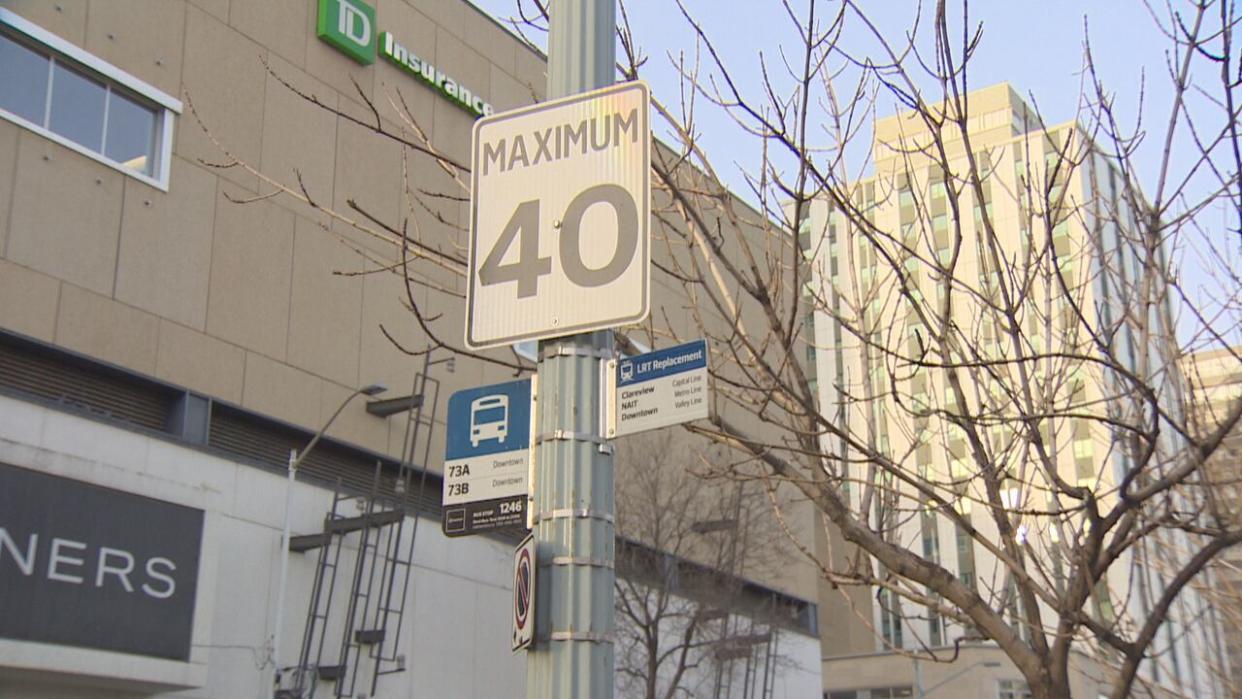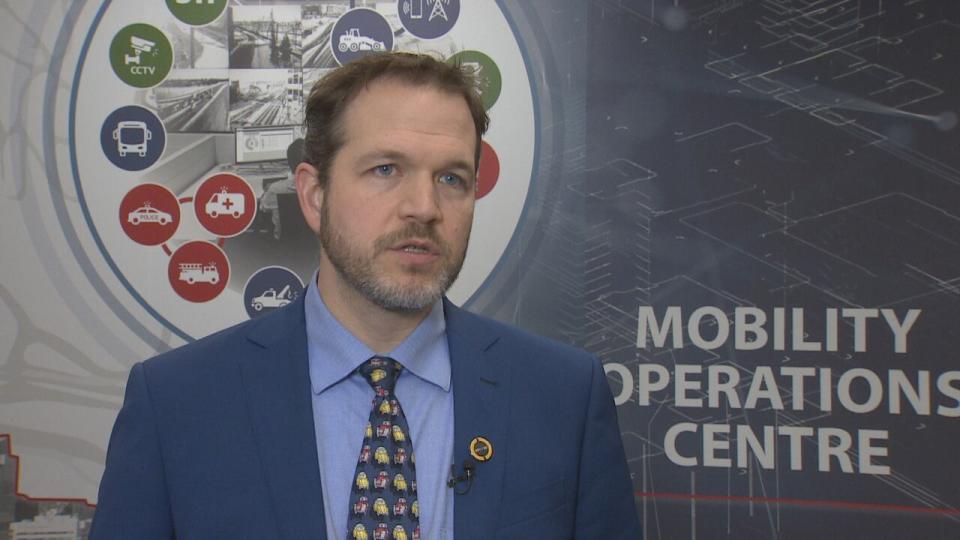As City of Edmonton lowers the speed limit researchers say it's helped drivers stay safer

The City of Edmonton lowered the default speed limit from 50 to 40 km/h in August 2021. Two years later, researchers from the University of Alberta are seeing results in traffic safety.
Drivers are slowing down between three and eight km/h on some city streets thanks to the reduction.
A joint study by the U of A researchers with the city monitored 200 locations before and after the speed limit change. Findings show that crashes were down by one quarter, and there was a 42 per cent reduction in injuries and fatalities for those walking, cycling, or riding e-scooters.
Tazul Islam, acting director of safe mobility with the city, said that enforcing speed limit reductions is just one tool in the city's toolbox for safety.
"Enforcement is one tool, but that's not our first line of action — often we add traffic calming, we add new signage."
The study found that speed reductions were higher on narrow roads, visually congested areas, or spots near a speed monitoring sign.
Ahmed Abohassan is the study's lead author and a safe mobility analyst for the city.
He said the city's "Vision Zero" goal is not stopping collisions entirely but eliminating fatalities and severe injuries on the road. And that the 40 km/h limit is effective in working toward that goal.
"It's allowing drivers more time to react. And when crashes happen, the severity of crashes is much, much less than when it's at 50 km/h."
The City of Calgary underwent a similar speed limit reduction in 2021. But Tony Churchill, Calgary's senior leader of mobility safety, said that the decrease in driver speeds was lower than Edmonton's — between 1.6 and 2.5 km/h.
He said Calgary did not combine the speed reduction with traffic calming measures, like narrowing roads.
"We did reduce the speed limit by 10 km/h, but there are many things that influence people's choice of speed. The way that the road is built and the number of people or parked cars can actually have a much stronger influence."

Tony Churchill, senior leader of mobility safety at the City of Calgary. (Radio-Canada)
Churchill also said that reviewing present data for 2022 and 2023 show an increase in collisions in almost all types of roadways.
He said this is likely the result of more cars on the road due to pandemic restrictions, weather, travel patterns — and driver behaviour.
"We've also seen some potentially bad behaviours in terms of increased distracted driving and speeding in general that the police have noted across our network anecdotally. So we're going to continue looking at that."


